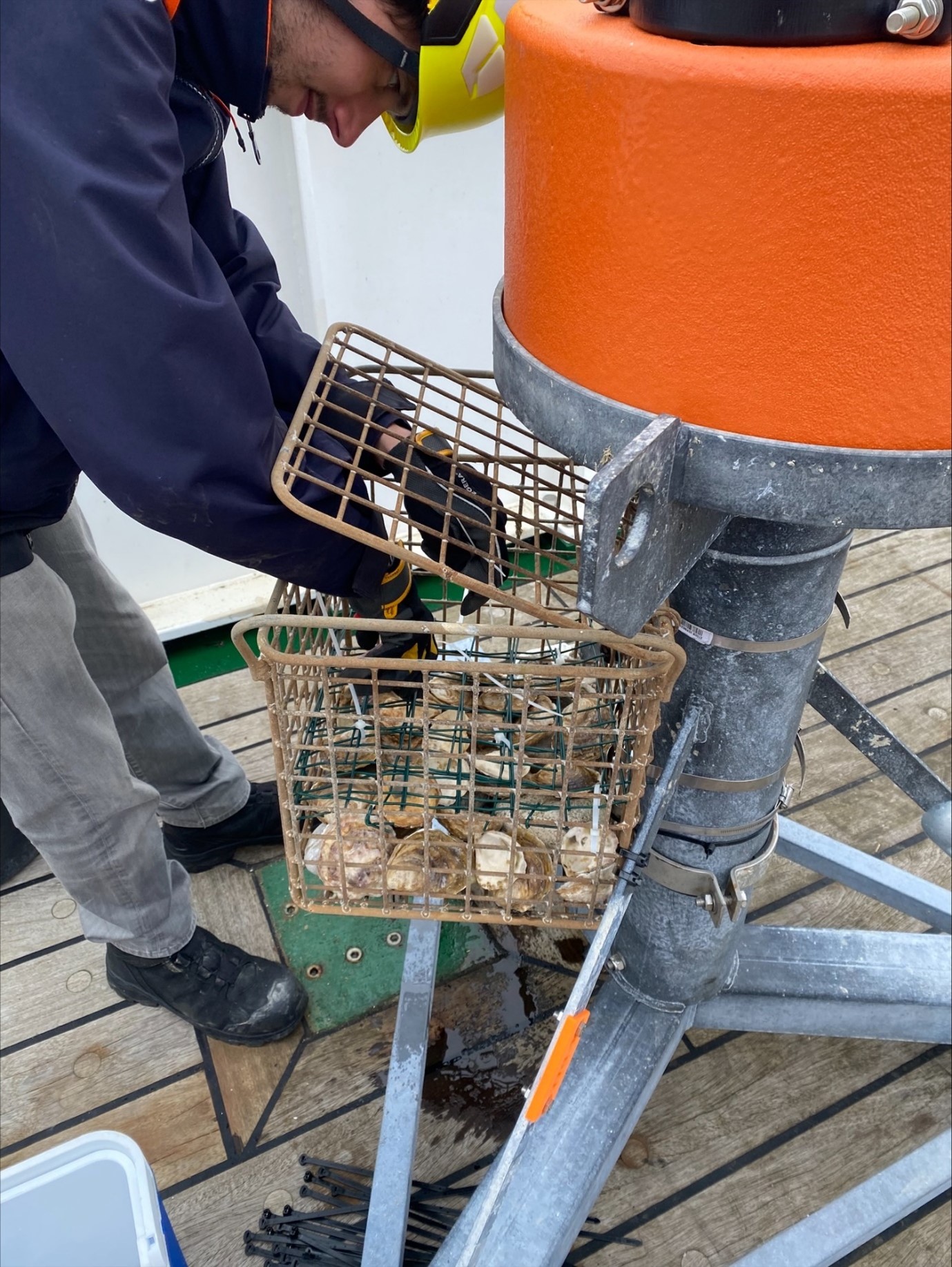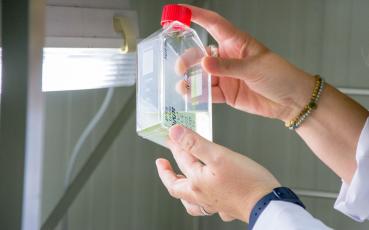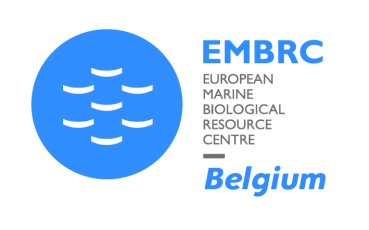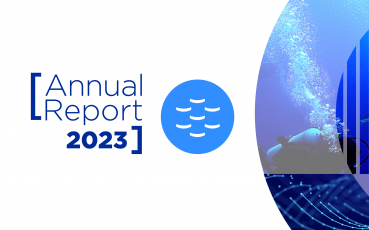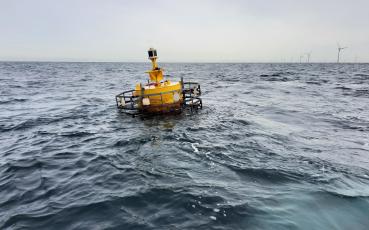June 2, 2024 – Belwind Offshore Windfarm (Parkwind), North Sea – In a fruitful collaboration, the Royal Belgian Institute of Natural Sciences (RBINS) and the laboratory of Aquaculture and Artemia Reference Center at Ghent University have successfully deployed custom-made oyster spat collectors in a field experiment at the offshore windfarm Belwind, located 46 km off the coast of Ostend in the Belgian part of the North Sea (BPNS). The spat collectors were installed with the Belgica research vessel as part of the Horizon Europe funded ULTFARMS project and supported by RBINS’ activities within the European Marine Biological Resource Centre Belgium (EMBRC Belgium). The experiment aims to advance our understanding of the settlement patterns of the European flat oyster (Ostrea edulis) in the BPNS. It also seeks to explore the effect of habitat complexity on settlement preferences, with the ultimate goal of reconciling commercial oyster cultivation with oyster restoration activities.
The spat collectors are part of the Artificial Hard Substrate Garden, an offshore marine experimental facility, managed and provided by RBINS as a service of EMBRC Belgium. Using state-of-the-art 3D printing technology and standardised clay plates (Figure 1, 2); spat collectors with varying levels of structural complexity were produced and deployed near the ULTFARMS oyster cultivation installation. This experiment will help researchers to investigate how different habitat complexities affect the settlement of European flat oyster larvae.
By studying the settlement patterns of O. edulis, we can create more effective conservation strategies and potentially boost their populations in the BPNS. After summer, the plates will be retrieved and analyzed in the laboratory to evaluate oyster settlement rates and patterns. This information will provide new insights into how habitat complexity affects the settlement of European flat oysters, aiding future restoration efforts of this highly emblematic species.
Next to that, one mini-tripod was equipped with a gabion holding mature European flat oysters (Ostrea edulis) and deployed near ‘spat collectors’ to study settlement patterns (Figure 3). This information is of critical value for restoration initiatives focused on Ostrea edulis.
The Artificial Hard Substrate Garden is offered as an EMBRC research service to both the scientific community and the industry. For further details, please visit the MARECO website or contact Wannes De Clercq (wdeclercq@naturalsciences.be).



